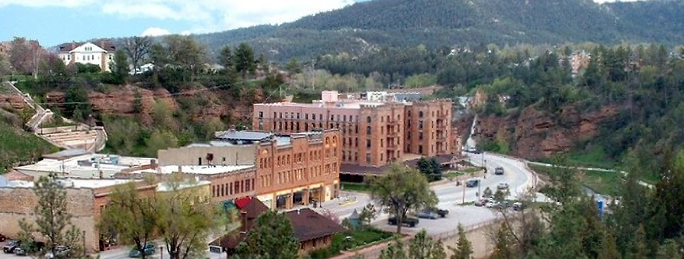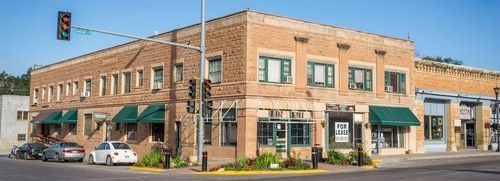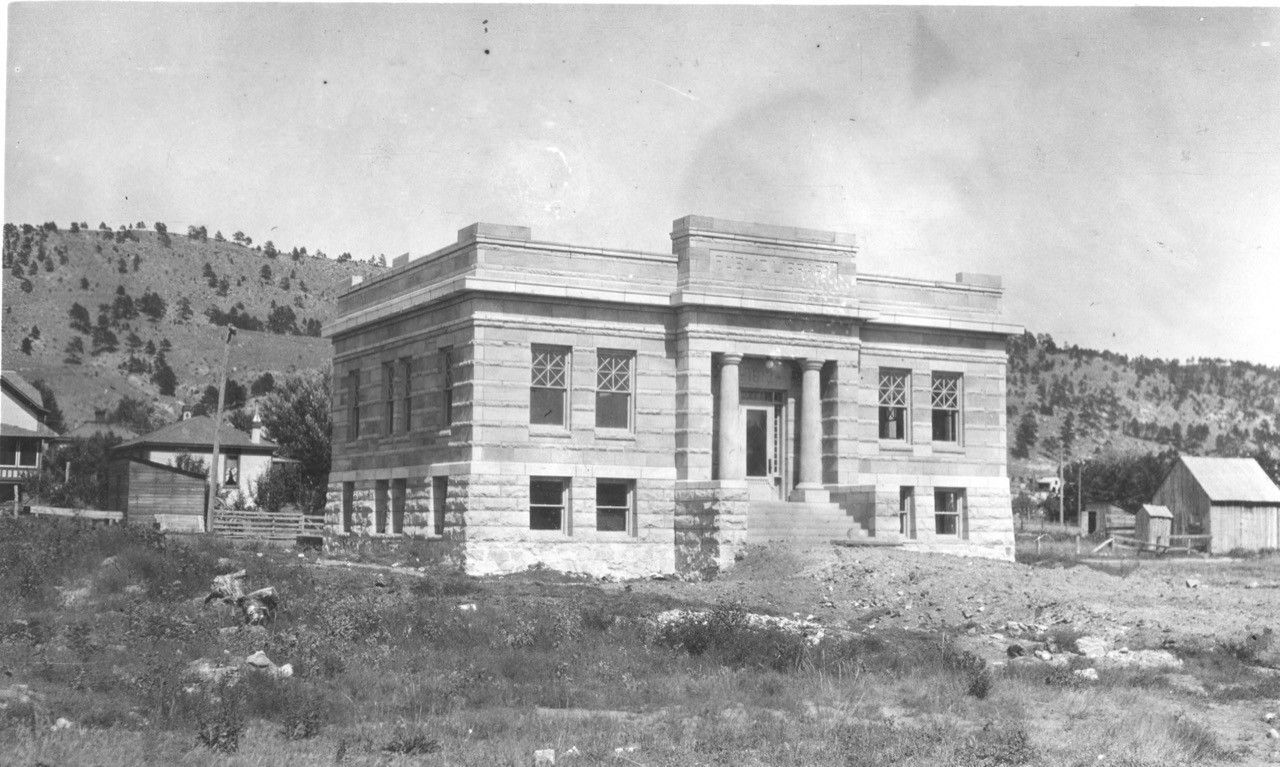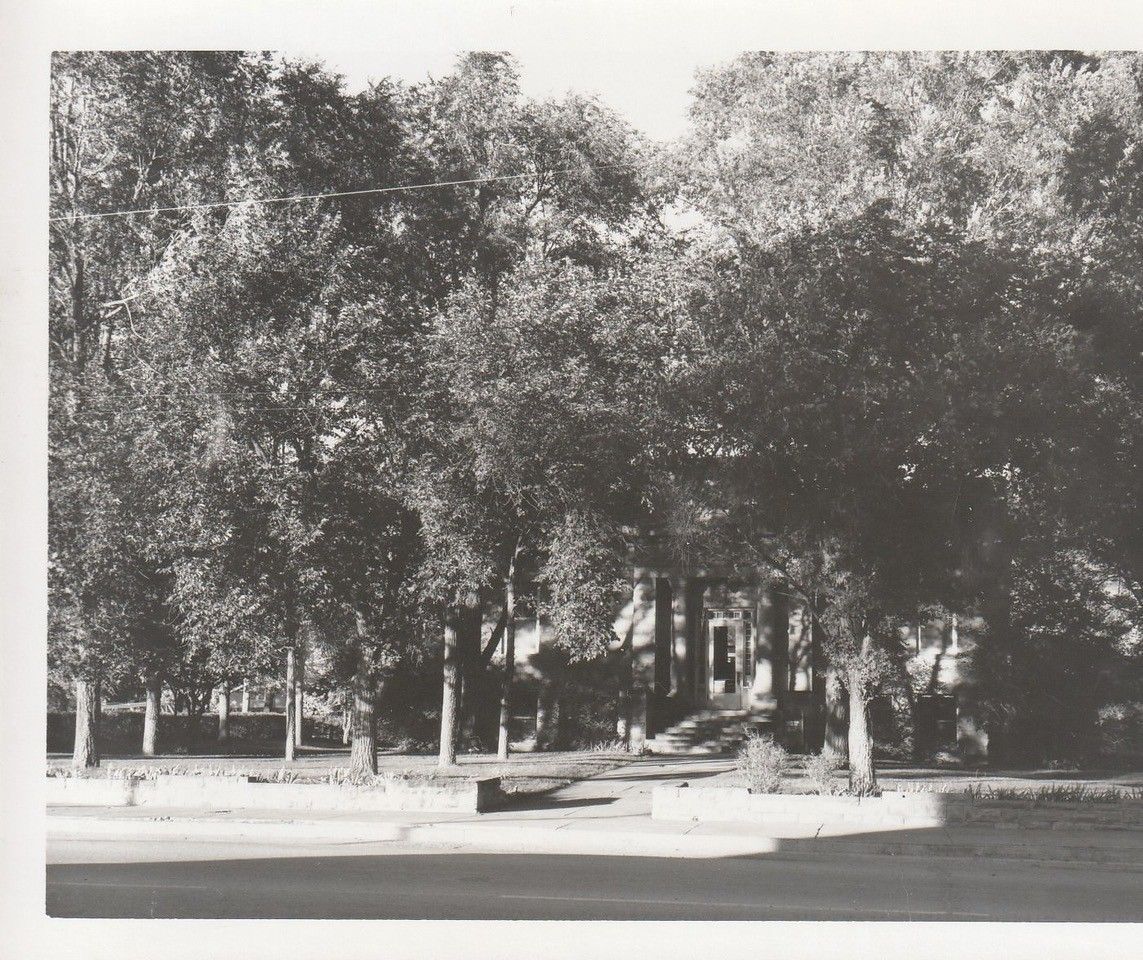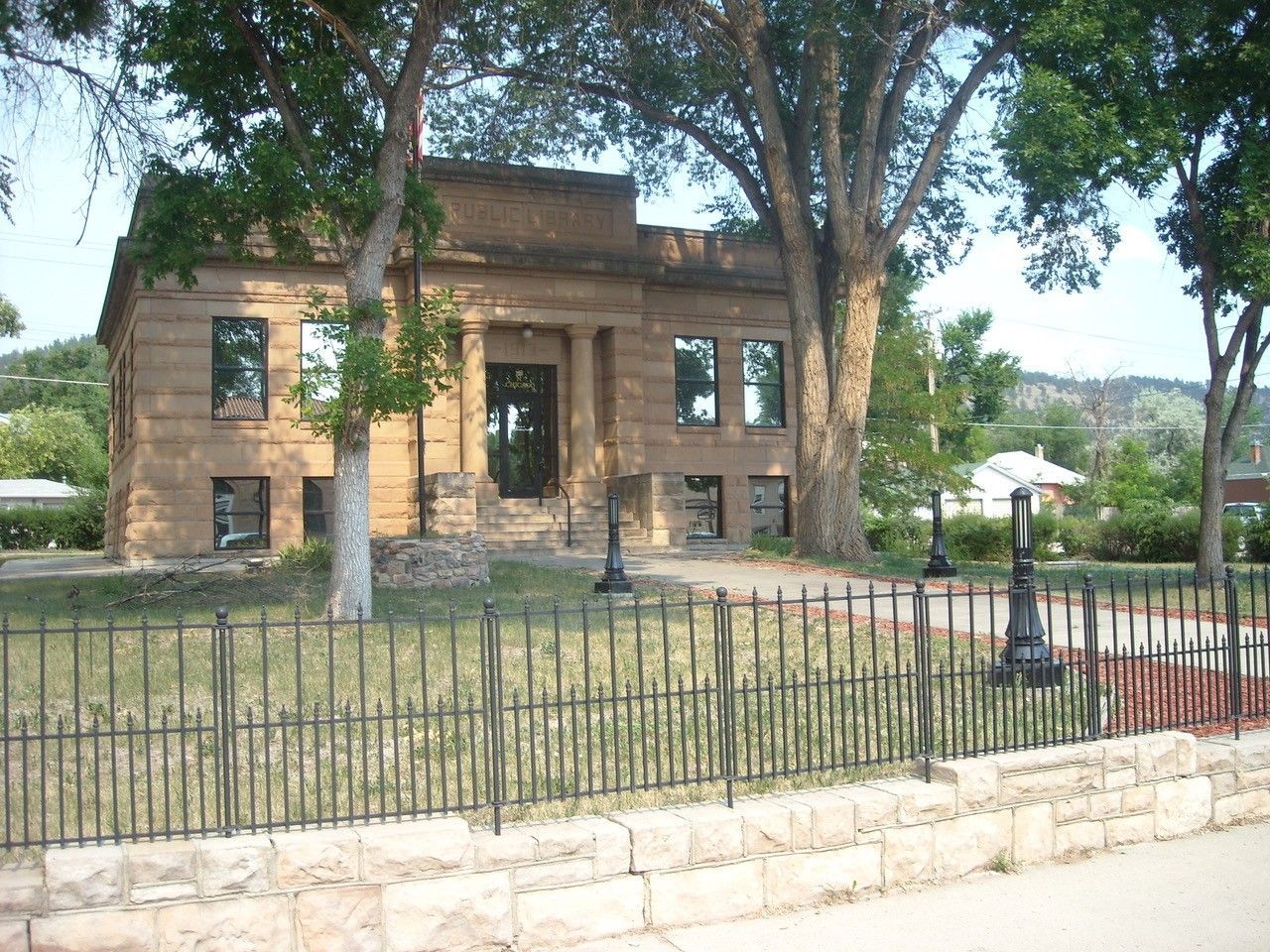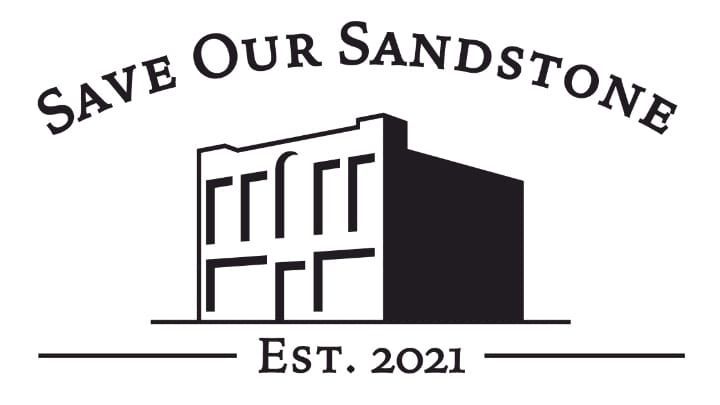Carnegie Public Library
📚 Carnegie Library (Currently Hustead Law)
Address: 145 North Chicago Street, Hot Springs, SD
Built:
1913
First Occupant:
Hot Springs Public Library
Current Occupant (2025):
Hustead Law Office (Attorneys Willie Hustead, Austin Shafer; Business Manager Lacey Rapp)
Sandstone Quarry:
Burke Quarry (based on confirmed use in other Carnegie libraries across SD, Iowa, and Nebraska; still seeking direct confirmation)
Architect:
John P. Eisentraut (Fall River Company)
Contractor:
O.E. Goodhand of Ord, Nebraska
Architectural Style:
Neo-Classical Carnegie Library with local sandstone facing
🏛 Historical Overview
The story of Hot Springs’ Carnegie Library began March 26, 1898, when the Shakespeare and Travelers’ Clubs organized the town’s first public library. Mrs. Fred Evans chaired the initial board. Over the next sixteen years the growing collection moved between City Hall, the Harlou Block, and a room behind Dr. Hargens’ office.
After several years of correspondence, Andrew Carnegie pledged $10,000 toward a permanent home if the city provided a lot and $2,400 toward the site. Local citizens raised an additional $500 to meet the final bid of $10,500. Architect John P. Eisentraut designed the building and contractor O.E. Goodhand supervised construction. It opened to the public July 16, 1914.
The new library featured Doric columns carved by John W. Coleman, each taking three full days to complete, and walls of Burke Quarry sandstone laid in contrasting courses of smooth and rock-faced ashlar. A WPA crew in the 1930s added the low stone wall that still frames the lawn.
From early on, the site’s natural setting foreshadowed future trouble. Oral history says the structure stands atop a filled gully underlain by springs, where nine massive stones were buried and later undermined by water. Around the 1920s, workers installed iron beams to shore up the foundation, buying decades of service.
By the 1980s, cracks and settling reappeared. Crews poured a concrete apron in 1981 and repointed three walls with the help of a $6,513 federal matching grant, but by November 1, 1995 a State Engineer condemned the building, citing a rear wall splaying outward and roof trusses only 1.5 inches from failure.
A citizen task force—Pat Russell, Joe Bails, Don Olstad, Myron Mossett, and Gary Merkle—worked with Patrik Davis Architects of Grand Junction on a bold plan to move the facade forward and add a 10,000 sq ft rear wing. The design was never approved. Meanwhile, library service shifted to the old Bethesda Lutheran Church at 16th and Baltimore.
In 2003, the City sold the empty Carnegie building for $65,000 to Steve Simunek, who stabilized it by mud-jacking beneath the foundation, effectively saving the landmark. It later housed offices for Southern Hills General Hospital.
The library’s books moved once more in 2007 to a new log structure at Butler Park, partly built with sandstone salvaged from the 1979 Evans Hotel fire. In February 2023, attorney William “Willie” Hustead, a descendant of the Wall Drug family, purchased the old Carnegie building for his growing law firm.
🖼 Architectural Significance
- Neo-classical Carnegie library design with local stone facing
- Doric columns carved by John W. Coleman, three days per column
- Combination of smooth-faced and rock-faced Burke Quarry sandstone courses
- High basement and parapet wall typical of Carnegie architecture
- Interior retains original woodwork, reflecting early 20th-century craftsmanship
📍 Later Uses & Current Status
- 1913–1980s: Public Library (served nearly 70 years)
- 1980s–1995: Ongoing structural repairs; condemned by State Engineer November 1st, 1995
- 1996: Library moved to Bethesda Lutheran Church at 16th and Baltimore
- 1995–2003: Purchased and repaired by Steve Simunek
- 2003–2010s: Converted into offices, including use by Southern Hills General Hospital
- 2023–Present: Hustead Law Office
🔍
Things SOS Is Still Looking For
Research Requests & Notes:
- More details on the transition period from library to hospital offices
- Confirmation of Burke Quarry’s direct involvement in this specific build
